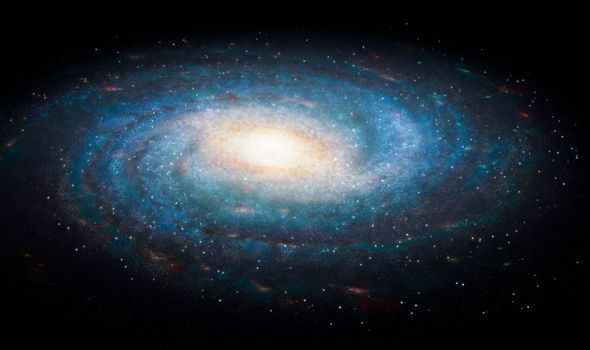ALIENS could be more commonplace in the Milky Way than previously thought as researchers discover as many as six billion Earth-like planets could exist in the galaxy, according to astronomers who believe the research could be a major boost to finding life elsewhere in the cosmos.
There are as many as 400 billion stars in the Milky Way galaxy alone, meaning there could be trillions of planets. As is evident from our solar system, the majority of these planets would be lifeless and barren, but billions could still be hospitable for life, according to new research. Scientists from the University of British Columbia (UBC) have searched through data from NASA’s planet hunting telescope Kepler to determine the likelihood of Earth-like planets – rocky worlds which could contain water.
To be considered Earth-like, the planet must also orbit a star like our Sun, known as a G-type star, according to the research published in The Astronomical Journal.
It also has to orbit the star in what is known as the Goldilocks Zone – the region around a star where it is neither too hot nor too cold for life to exist.
UBC researcher Michelle Kunimoto, co-author of the new study, said: “My calculations place an upper limit of 0.18 Earth-like planets per G-type star.
“Estimating how common different kinds of planets are around different stars can provide important constraints on planet formation and evolution theories, and help optimise future missions dedicated to finding exoplanets.”

Alien study: Six BILLION Earth-like planets could exist in galaxy as alien search expanded (Image: GETTY)

There are as many as 400 billion stars in the Milky Way galaxy (Image: GETTY)
UBC astronomer Jaymie Matthews: “Our Milky Way has as many as 400 billion stars, with seven per cent of them being G-type.
“That means less than six billion stars may have Earth-like planets in our Galaxy.”
Previous estimates had suggested that there could be as few as 0.02 Earth-like planets per Sun-like stars.
However, Ms Kunimoto used a technique known as ‘forward modelling’ to paint a clearer picture.

“Estimating how common different kinds of planets are around different stars can provide important constraints on planet formation” (Image: GETTY)
She explained: “I started by simulating the full population of exoplanets around the stars Kepler searched.
“I marked each planet as ‘detected’ or ‘missed’ depending on how likely it was my planet search algorithm would have found them.
“Then, I compared the detected planets to my actual catalogue of planets. If the simulation produced a close match, then the initial population was likely a good representation of the actual population of planets orbiting those stars.”
The study should also shed more light on the ‘radius gap’.
A statement from UBC said: “The radius gap demonstrates that it is uncommon for planets with orbital periods less than 100 days to have a size between 1.5 and two times that of Earth.
“Ms Kunimoto found that the radius gap exists over a much narrower range of orbital periods than previously thought.
“Her observational results can provide constraints on planet evolution models that explain the radius gap’s characteristics.”
source: express.co.uk







